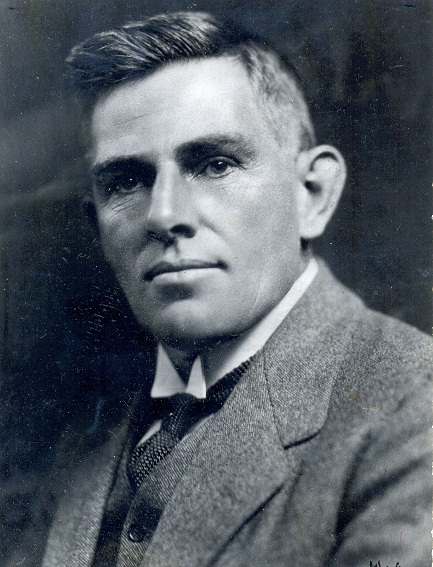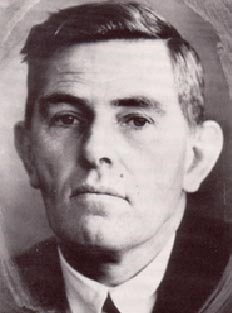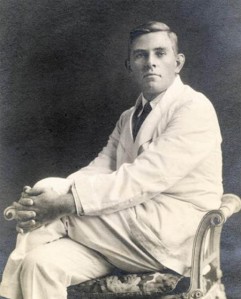<Back to Index>
- Brewer John Molson, 1763
- Poet Christian Frederik Louis Leipoldt, 1880
- Secretary of State for Foreign Affairs Herbert von Bismarck, 1849
PAGE SPONSOR



Dr. Christian Frederik Louis Leipoldt (December 28, 1880 – April 12, 1947) was a South African poet, who wrote in the Afrikaans language. Together with Jan F.E. Celliers and J.D. du Toit (published as Totius), he was one of the leading figures in the poetry of the Second Afrikaans Movement. Apart from poetry, Louis Leipoldt (Loo-ee LAY-polt) wrote novels, plays, stories, children's books, cookbooks and a travel diary. He is numbered amongst the greatest of the Afrikaner poets and he was described by D.J. Opperman, himself a noted South African poet, as "our most versatile artist".
Leipoldt was born in Worcester in the Cape Province, the son of a preacher, Christian Friedrich Leipoldt, of the NG Kerk in Clanwilliam, and grandson of the Rhenish missionary, Johann Gottlieb Leipoldt, who founded Wupperthal in the Cederberg. His mother was Anna Meta Christiana Esselen, daughter of Louis Franz Esselen (1817 – 1893), another Rhenish missionary at Worcester. His early education was largely at home and for a while, during the Second Boer War, he was a reporter. Between 1902 and 1907, with funding from the botanist Harry Bolus, he read medicine at Guy's Hospital in London and then traveled in Europe, America and the East Indies. At times his health was poor. For a period of some six months during 1908, he was the personal physician of the American newspaper magnate, Joseph Pulitzer, aboad Pulitzer's yacht. Later Leipoldt's career was varied: for a period he was a school doctor in London, before becoming the Medical Inspector of Schools in the Transvaal and then in the Cape Province. He returned to journalism for a while (1923) but finally settled down as a pediatrician in Cape Town in 1925. He never married. He died in Cape Town but, because of his deep love for the Hantam — a beautiful, mountainous and wild district north of Cape Town — his ashes were laid to rest in the rugged Pakhuis Pass (Storehouse Pass), near Clanwilliam.
His grave is situated at the base of a cave like opening on the mountain face. Directly above his tombstone faint bushman drawings can be seen that were drawn many years before his death.
The Worst Horror
- This is the bitterest thing of all my days,
- That which I have loved so well, that now is dead
- And in a coffin laid away, of lead
- And cedarwood, immortal somewhere stays,
- Or as a ghost-cloud goes its lonely ways
- By strange and boundless forces urged ahead,
- Perhaps, like me, forlorn, uncomforted,
- But out of reach, howe'er one pleads or prays,
- Day after day with unending lament.
- This is the bitterest thing, that I no hand
- Can reach to help, or comfort to impart,
- This is the bitterest thing, that I no hand
- No aid can give, and no encouragement;
- And that there wanders in that ghostly land
- Forlorn, that which I loved with all my heart!
- And that there wanders in that ghostly land
(Translated by C.J.D. Harvey)
Leipoldt
wrote much about nature in general and in particular about the
landscapes and legends of his beloved Hantam. His poetry also deals with
the suffering caused by the Second Boer War and the culture and values
of the Cape Malays. Most of his work does not translate well into English.
The C. Louis Leipoldt Medical Centre in Cape Town is named after C. Louis
Leipoldt. The Louis Leipoldt Primary School in Lyttelton (Centurion) is
named after C. Louis Leipoldt.